At 11 p.m. on Wednesday Jan. 25, 300 volunteers gathered at St. Monica’s Church. Bundled up in puffy jackets, scarves and hats, they prepared for the common mission that had brought them together: to count the number of individuals experiencing homelessness on Santa Monica’s streets.
Every year, on a night in late January, the City sends volunteers to designated areas with clipboards and flashlights to tally the number of people who appear to be living in homelessness outside, in cars, tents and other make-shift shelters. Similar efforts play out simultaneously across the region as part of the Greater Los Angeles Homeless Count, organized by the Los Angeles Homeless Services Authority (LAHSA).
The goal of the point-in-time count is to get a snapshot of the homeless population. By doing it across the region at the same time, officials hope to make it less likely to double count or miss individuals who move around. The number of people in shelters is also calculated on the same night.
While the count is mandated by the US Department of Housing and Urban development, it also helps officials to gain a better idea of the number of people living in homelessness, demographic trends among the population, and locations of concentration. This data is used to inform local and regional efforts to address homelessness and can affect how resources are allocated.
This year marks the first count since January 2020 not impacted by COVID 19 restrictions. The 2021 count was canceled all together and the 2022 count was delayed and modified to reduce interaction. But this year, volunteers sipped hot drinks and chatted as they awaited their assignments.
Zach Coil, director of Westside outreach for homeless services organization The People Concern, said he felt the sense of camaraderie that surrounded the event prior to the pandemic had returned.
"I like coming and seeing all of the people that show up and being with the community," he said.
While a significant portion of the volunteer pool consisted of social service professionals like Coil – as well as police officers, firefighters and city staff – a significant number of Santa Monica residents also participate every year. As volunteer Ken Kaufman put it, because they feel "it’s the right thing to do."
Fellow volunteer Yocheved Herrmann-Blanton echoed this sentiment.
"I live in this city and I have acquaintances that are out on the streets," she said. "I care about these people and I want to see things change."
Resident Michael Pottenger said he had been volunteering for the count since 2012 and it had become a habit for him to register every January. Beyond supporting data collection efforts, he views it as a valuable way to better understand the city and its challenges.
"Bringing the numbers in that they need for whatever reporting they need to get resources, that’s the obvious reason," he said. "But I think it’s also good for the volunteers to get visibility into what’s going on with homelessness and what the City is doing and all the different people who are working on the homelessness problem."
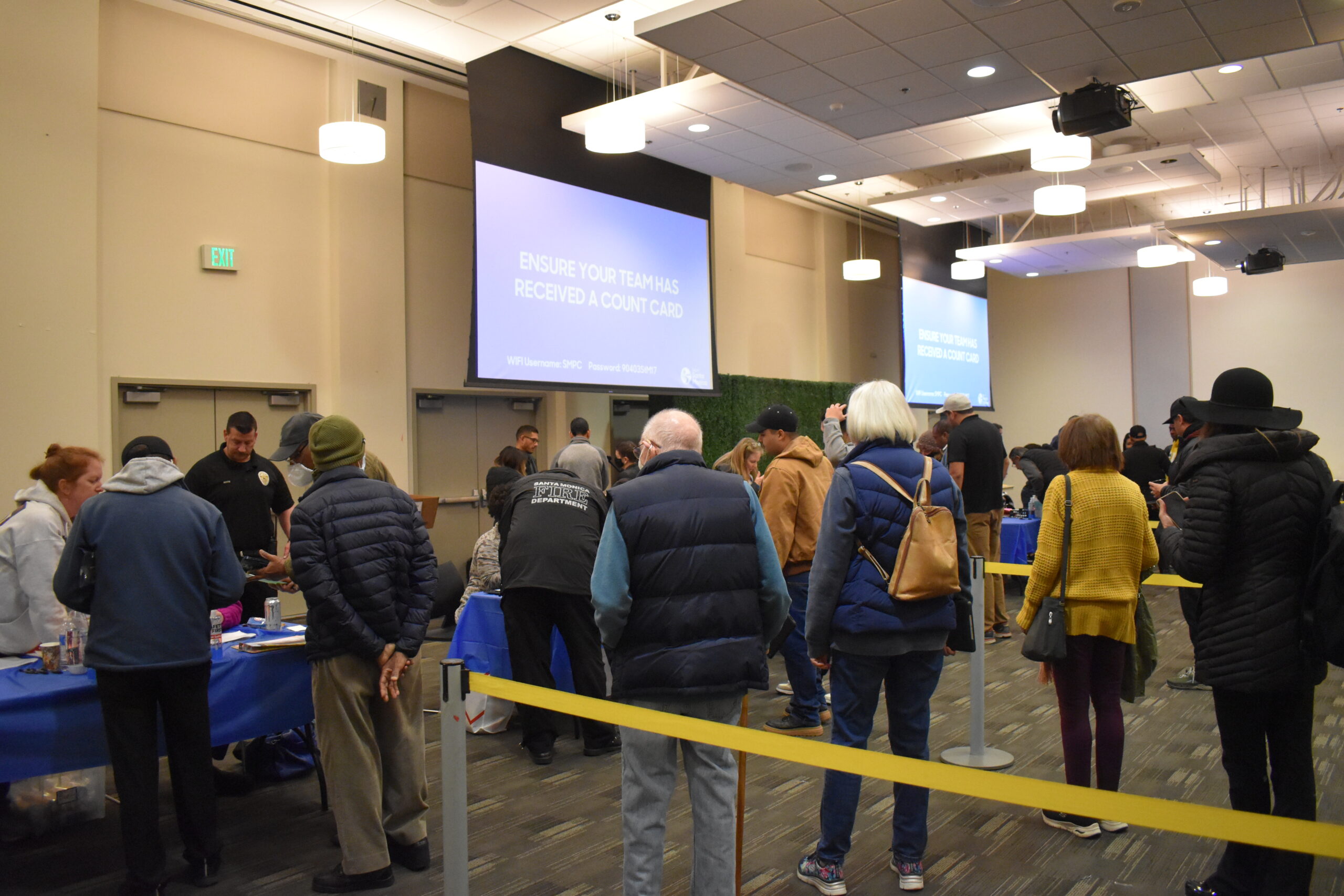
Past results, criticisms and concerns
Results from the 2022 Homeless Count showed 807 individuals living in homelessness outdoors or in shelters in Santa Monica. This marked an 11% decrease from the 907 individuals counted in 2020 and the lowest number reported since 2016 when 728 individuals were recorded.
However, questions were raised about the accuracy of the 2022 count in parts of the County, due in part to the use of an app to record data that was reported to be plagued with technical issues.
Among several questionable findings, the 2022 count reported zero homeless individuals were found in an area of Venice with a clearly visible homeless population.
LAHSA reported homelessness had decreased significantly in Venice overall from the year before, but a recently released study by the Rand Corporation suggests otherwise. Researchers conducted their own surveys of the area on different days over the course of the year and found that the number of unsheltered individuals in fact appeared to have increased by nearly 32%.
While Santa Monica does conduct the count in partnership with the County and uses the same resources, including the app (which was a different one this year), the City is responsible for organizing it itself.
Deputy City Attorney Jenna Grigsby, who has been working in the City for 13 years, said she has faith in Santa Monica’s process.
"The City’s been doing it so long and so well that they have it really well organized," she said. "We get a lot of really great volunteers who come out and participate and that makes a really big difference, especially when it’s like local Santa Monicans because they know the area really well and they know what to look for."
Each volunteer group is given a clipboard with a detailed map of their assigned area and a paper form to physically mark their findings in addition to entering them into the app.
This year, Grigsby was part of a team with other seasoned counters, including CEO of The People Concern John Maceri and Santa Monica Police Department Officer Alex Bullock, as well as relative newcomers City Manager David White and Fire Chief Danny Alvarez. The team was tasked with covering Tongva Park, just across from City Hall.
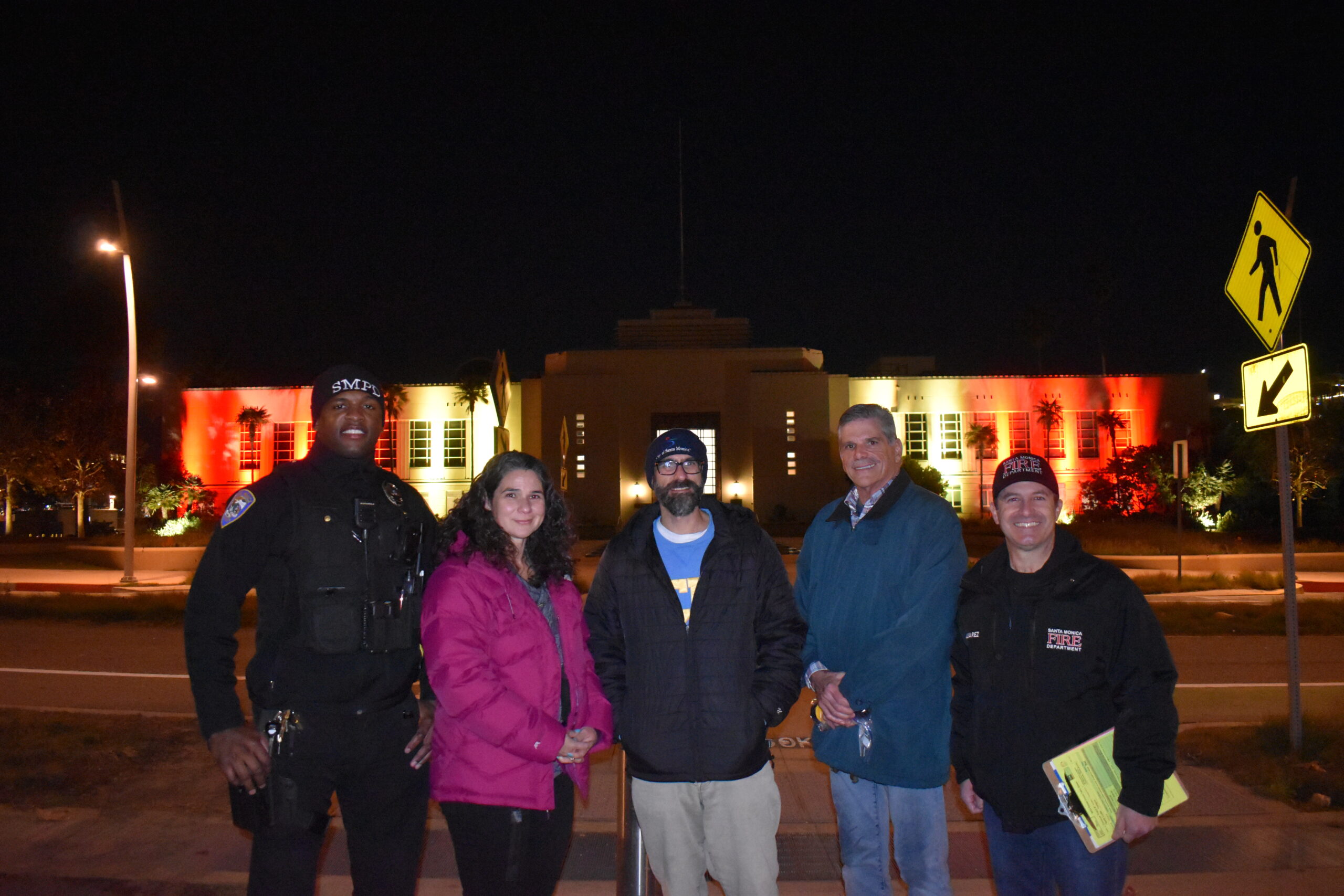
Tallying in the park
The Tongva Park team departed from the church around 11 pm. In the car on the way over, Grigsby reflected on the reasoning for doing the count at night.
"I think it’s the best option we have to really get a citywide picture because I don’t think you could do it during the day," she said. "The population is so transient and there’s too many visitors, tourists, people who work here but don’t live here – I think it would just be difficult."
After arriving at the destination, the team plotted their route through the 6.2 acre park. They set out walking along the south side, with Maceri shining a flashlight along the path, Alvarez holding the clipboard and Jenna with the app open on her phone.
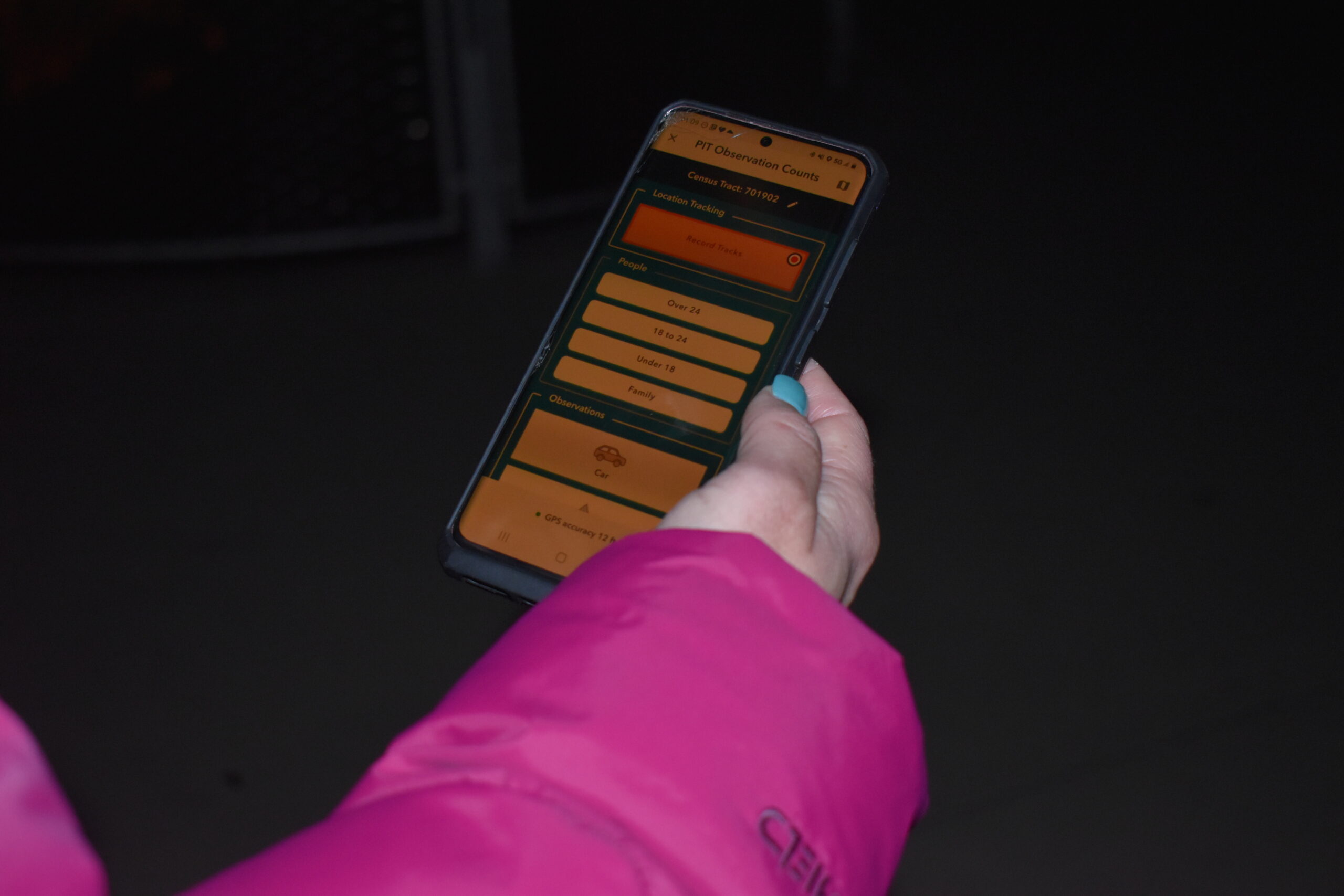
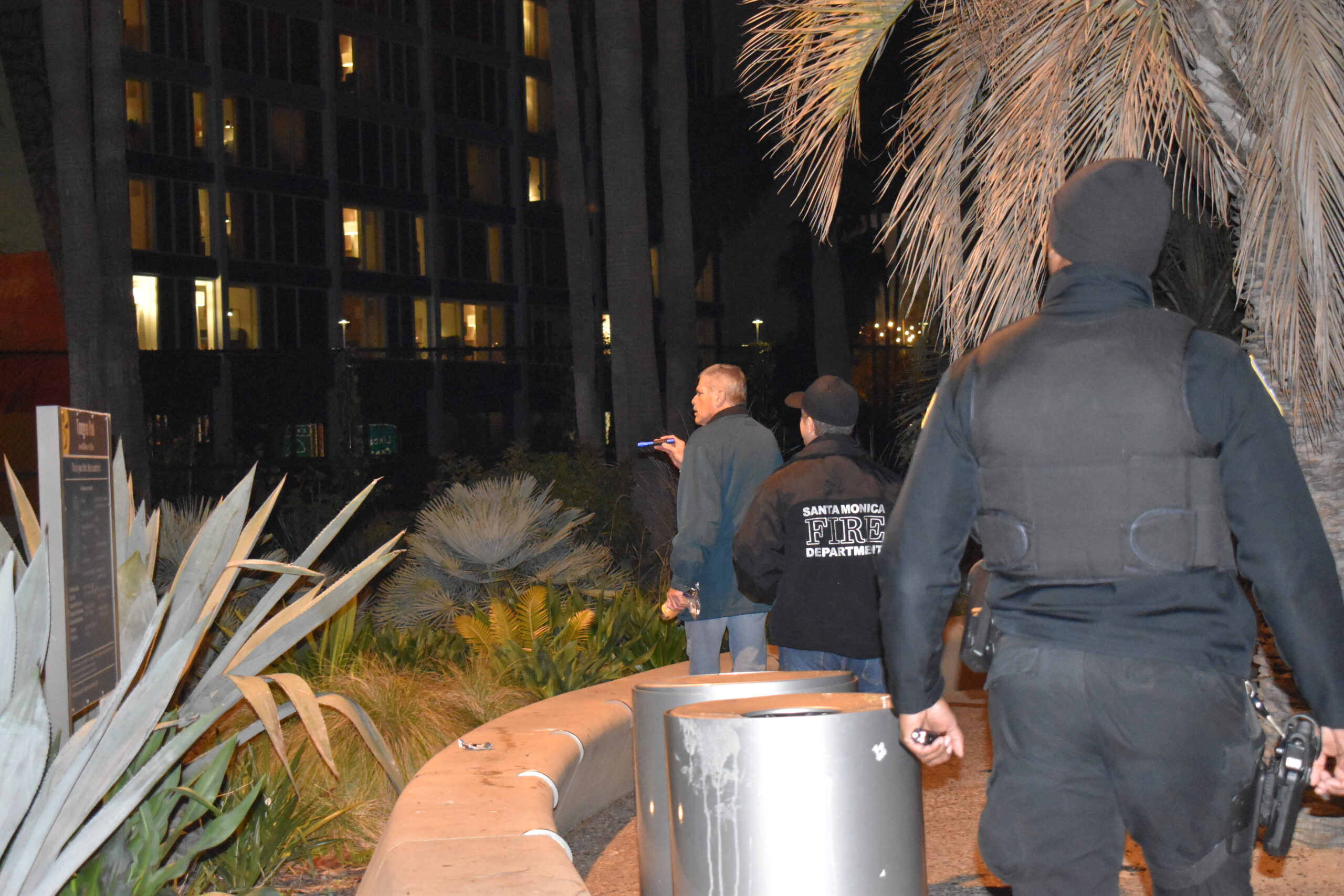
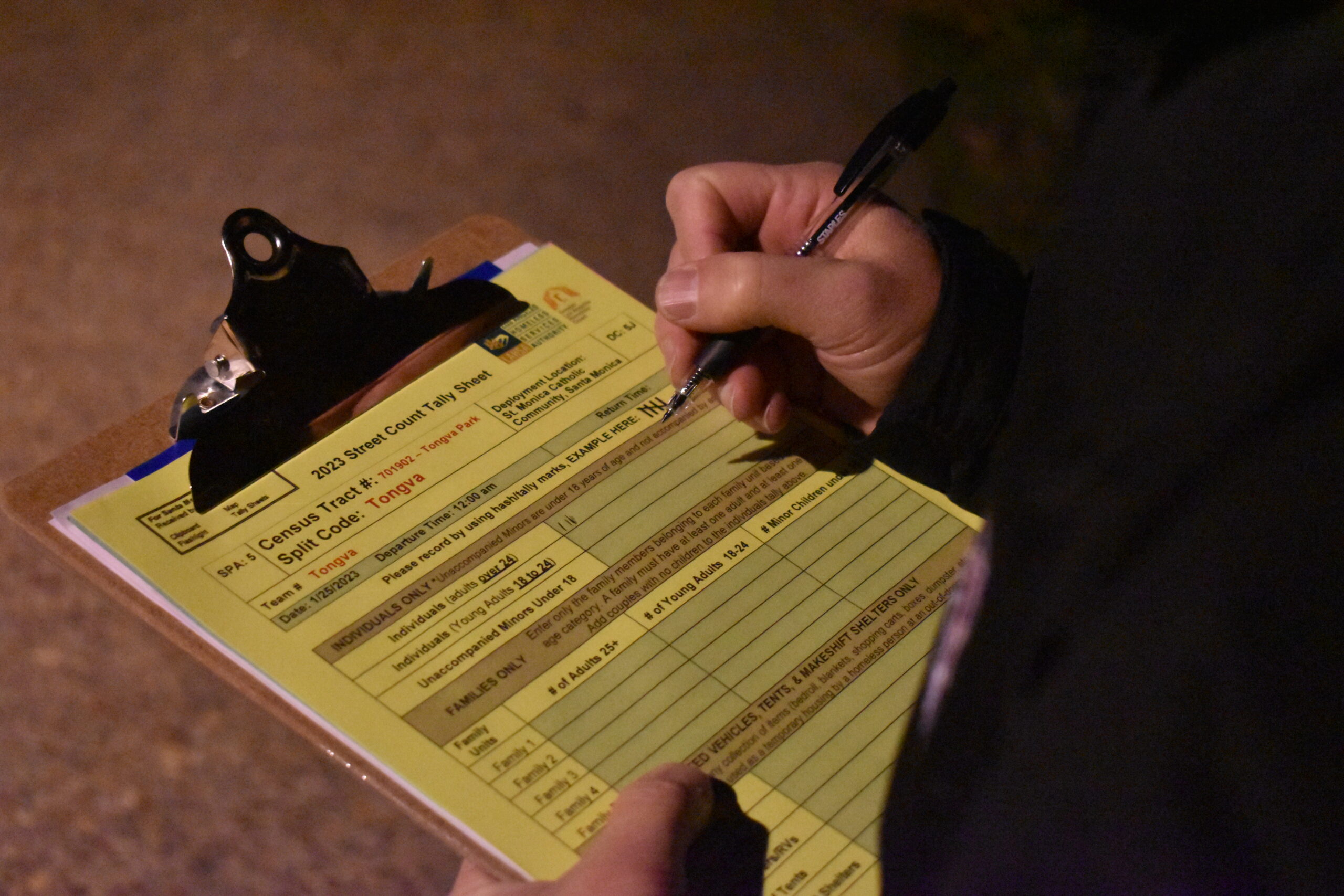
About five minutes in, they found someone sleeping on the park’s observation deck. Alvarez made a tally. Continuing on, they found someone tucked in behind some shrubs. Another tally.
After about 30 minutes, the group had walked the whole park, looked behind trees, under bushes and in the play structure. Alvarez had made a total of ten tallies.
After each person had been properly marked, Officer Bullock approached them, warning that the park was closed and they needed to move. For some, he handed out a card with information about available services and resources.
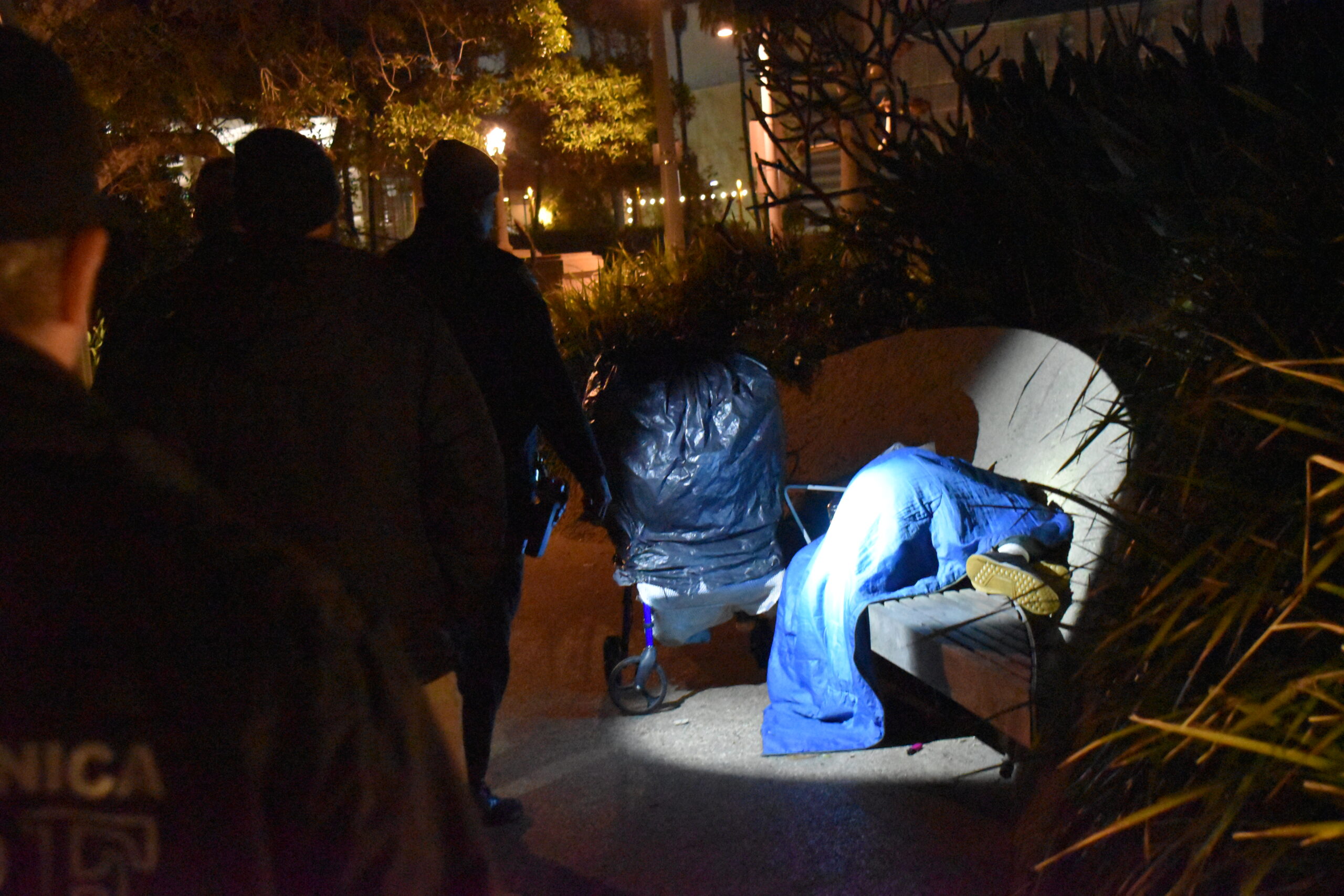
As they stood reviewing their results, a person walked through the park and Officer Bullock remarked that it was still too early for many people to have settled down for the night. He said, from his experience finding people sleeping in the park, the most accurate time to do the count would be closer to 5am.
The group piled back into the cars and returned to the church, where they turned in their paper form and checked with a staff member to make sure the digital data had been submitted correctly.
Impressions and findings
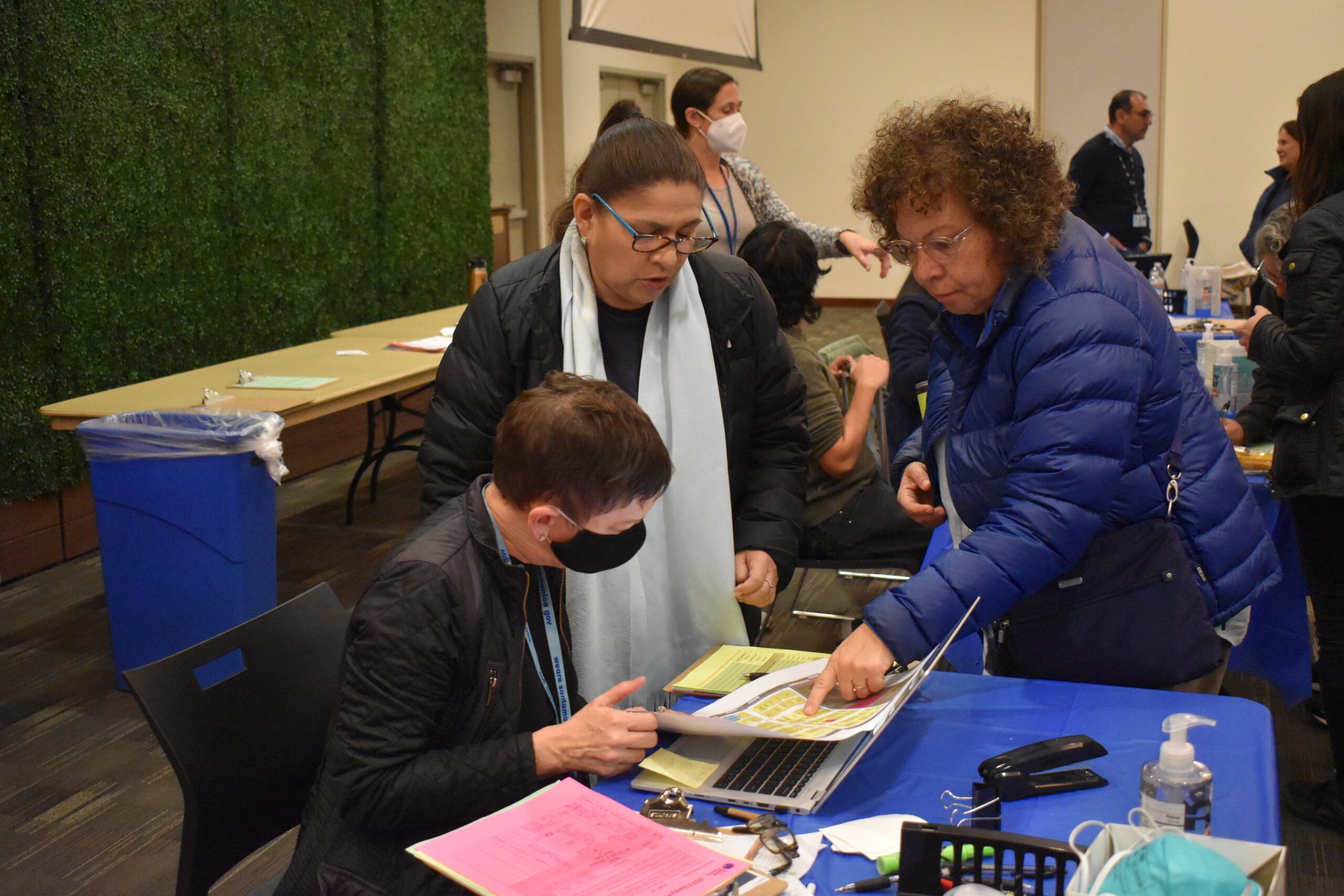
As other groups trickled in, some discussed their experiences and findings.
Donovan Wilkes and Erica Leon, who both work with the Downtown Santa Monica (DTSM) Ambassador Program, said their experience using the new app was overall positive.
"The app was different from last year and I think it was better," Wilkes said. "We had some technical issues but still, I think that it was a little easier than last year."
He said this was his fourth year doing the count, but it was a first for Leon who said she was pleasantly surprised by how smooth everything was.
"Check in was pretty easy, pretty straightforward, everything was kind of self-explanatory. It was really well put together," she said. "I have to say, I thought it was going to be more complicated, but no, they made it very easy to kind of get out there and collect the data."
Prior to the count, volunteers were asked to complete an online training which included watching a video produced by the City about the overall process and one from the County about how to use the app.
Santa Monica College Board of Trustees member, DTSM Board Vice Chair and long-time count volunteer Barry Snell said he felt this helped streamline the process compared to other years when volunteers had to go through an in-person tutorial.
"Now you have it on your phone, you do it online… so that was good, you got here and got to work," he said.
His team surveyed a span of several blocks between Wilshire Boulevard and Montana Avenue on the western-most side of the City. He said he saw more cars that appeared to have multiple people sleeping in them than single individuals on the streets. He said he had also noticed other indicators which made him feel like homelessness population has grown and become more established.
Volunteer Andrea King, a Santa Monica resident since 1992, said she had noticed similar changes over the last few decades from her own daily observations.
"I think people living on the streets now are spending longer on the streets," she said. "When I look under the freeway overpasses, the tents and the makeshift shelters and things, they have so much stuff and they’re so entrenched… it used to just be people in doorways… but now they’re really living there – it feels like a change.
Council Member Caroline Torosis also volunteered at this year’s count. While she said her team did not find many people in their area, she had heard worrying reports from groups in other areas.
"What I’m hearing from other folks is that they had significant numbers, so I’m concerned of course," she said. "But we’re all here as a community to come together to try to resolve this crisis."
Results are expected to be announced in the coming months.
Even with the measures in place for accuracy, Assistant Director for Santa Monica Outreach for The People Concern Carol Ross said it is important to remember that the count is just an estimate, and the reality is likely greater.
"I would emphasize that whatever count comes out is definitely a floor because there’s no telling how many people are tucked away in places you can’t see them or piled into one tent," she said.









